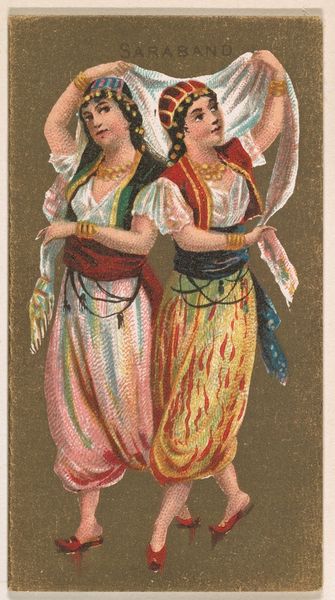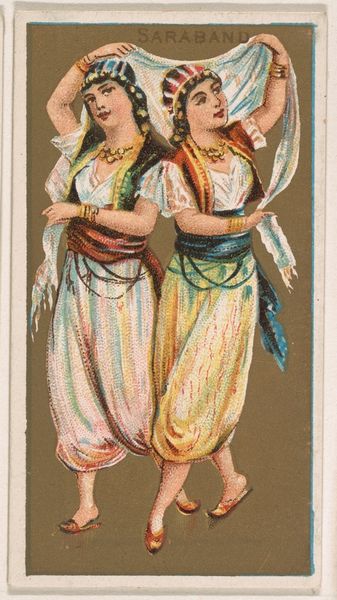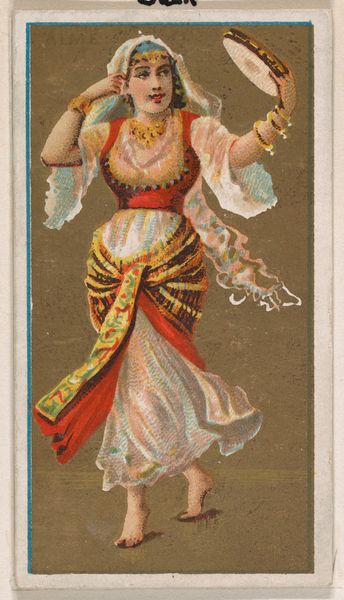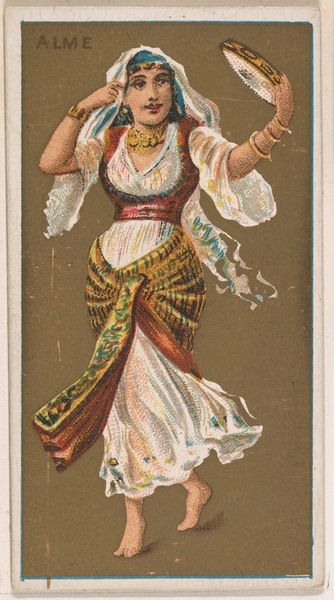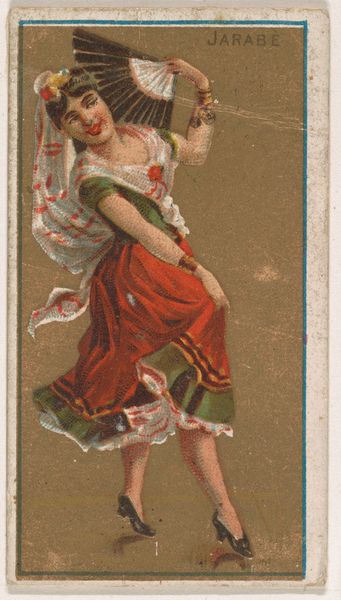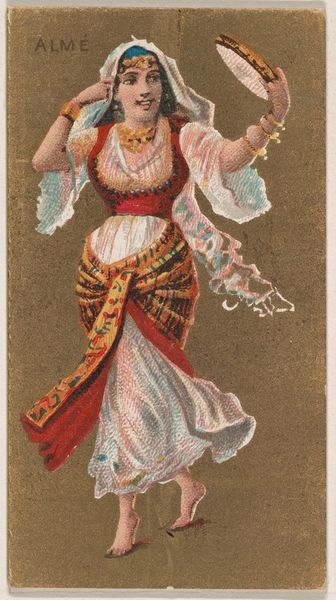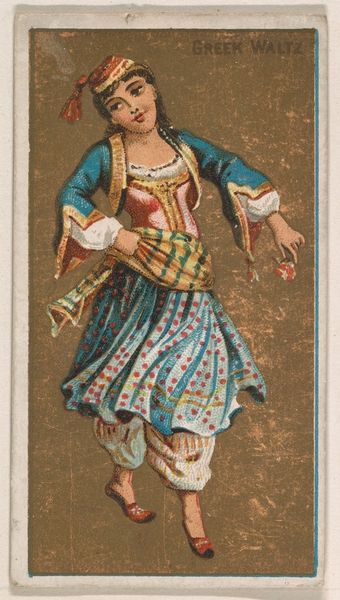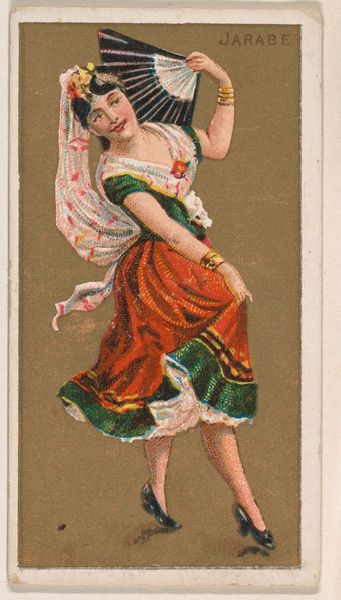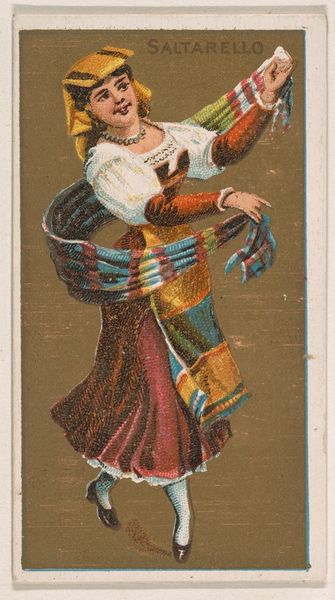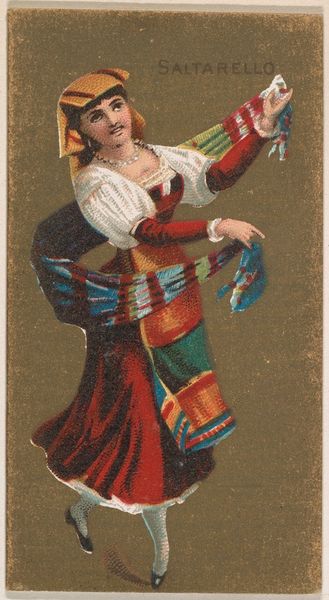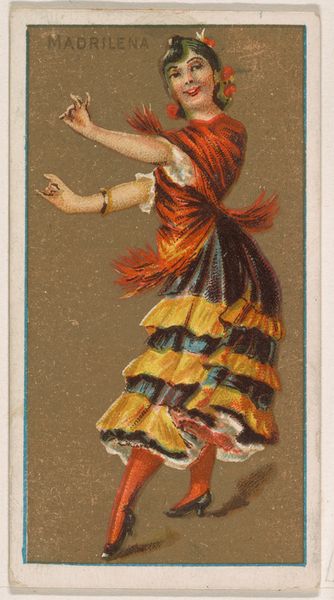
Saraband, from National Dances (N225, Type 1) issued by Kinney Bros. 1889
0:00
0:00
drawing, print, watercolor
#
portrait
#
drawing
# print
#
impressionism
#
watercolor
#
orientalism
#
watercolour illustration
#
genre-painting
#
portrait art
Dimensions: Sheet: 2 3/4 × 1 1/2 in. (7 × 3.8 cm)
Copyright: Public Domain
Curator: Oh, how utterly charming! Look at this print, "Saraband, from National Dances," dating back to 1889, issued by Kinney Bros. Editor: It has an intriguing exotic flair—immediately evoking the orientialist trends of the time, a longing for otherness. It's colourful but also unsettling given how tobacco companies historicised foreign cultures in ways that catered to consumer cravings, while making the faraway 'familiar'. Curator: Precisely! It’s a drawing with watercolor elements, offering a glimpse into a romanticized genre painting, typical of impressionism and of portraits, really. Tell me, what jumps out at you? Editor: Well, the poses feel so deliberately staged—a little stiff, maybe. I'm thinking about how these images circulated. This work romanticizes these dance styles in the form of commercial advertisement. So this dance isn't for the women involved or to showcase its historical background, but, instead to advertise tobacco products to new markets. How interesting! Curator: I think it also really works at being visually compelling as the image seeks to communicate a story. I mean, the dancers, almost like twins, are graceful, adorned in detailed costumes; the artist captures such movement and energy. Editor: True. The way that impressionism takes on that watercolour look here. It has this tension that feels so palpable. But, of course, let’s not forget this was a time of intense colonial expansion, where western cultural dominance played itself in various visual images and the commodification of exoticism was lucrative. How does that orientalist lens strike you in the piece? Curator: It’s certainly there, impossible to ignore really, in their depiction. While the artist might have seen it as reverential or aspirational, now there's almost a sad knowing of the exploitation, of the appropriation. Though maybe some see value in preserving cultural moments, as the image gives access to customs. Editor: Yes, I think you’ve touched upon its key duality. The image may have that colonial gaze. At the same time, it's preserving traces of tradition, even if interpreted. It becomes a difficult mirror reflecting how we continually consume culture, both visually and actually. It raises so many ethical and political questions! Curator: Exactly! And it shows you that there is always more to things than meets the eye and there is always another layer for you to learn if you keep digging into something.
Comments
No comments
Be the first to comment and join the conversation on the ultimate creative platform.
